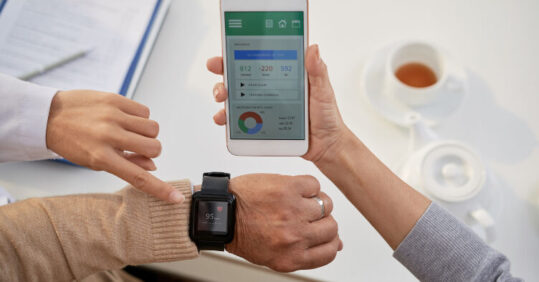‘Think creatively’ to minimise digital health inequalities, say charities

Nurses and other healthcare professionals should take steps to help avoid digital exclusion and health inequalities health, new guidance from a coalition of health and social care charities has suggested.
While a continued shift to digitally enabled health and care has made it easier for some people to access health and care, it has made it harder for others, particularly those who already faced health inequalities, the Health and Wellbeing Alliance argues.
They recommend that healthcare professionals consider ‘thinking creatively about practical things that can be done to support and enable people’ as well as ‘considering accessibility and inclusion from the outset’.
Reasons that someone might face digital exclusion include: not having a device, lack of skills or confidence, low awareness of how to use digital tools in a safe way, or lack of motivation to use digital tools. People with learning disabilities, for example, may be at higher risk of digital exclusion.
Related Article: NHS 10-year plan: What does it mean for nursing?
Sarah Sweeney, interim chief executive of National Voices, said: ‘The shift to digital in health and care has changed how many people access health services – undoubtedly, digital tools can improve access to and experience of care for many people.’
Five Key Actions to Tackle Digital Exclusion
1 – Put choice and personalisation at the centre of all your work
Make a clear commitment to respect individuals choices about how and when to access health services
2 – Ensure all elements of your work are accessible and inclusive
Ensure you consider accessibility from the outset and put practical measures in place to achieve this
3 – Make sure to co-produce your work with people living with ill health,disability and those at greatest risk of exclusion
Involve people living with disability and ill health in the creation of the service to avoid risk of exclusion
4 – Work to achieve parity of access, experience and quality of care between digitally enabled and non-digitally enabled care
Related Article: Funded nurse workforce plan needed for neighbourhood health services
Consider and respond to the equality impact of every decision. Make sure your staff team is supported and empowered to provide equitable care.
5 – Invest in support for people experiencing digital exclusion
Think creatively about practical things you can do to support and enable people (who want to) to use digital tools.
In response to the launch of the guidance, The Queen’s Nursing Institute (QNI), which recently published a study on the role of technology in community nursing, told Nursing in Practice that nurses have a key role when it comes to reducing barriers to digital health and health inequalities.
This is most effective when done in partnership, said the QNI, involving the multidisciplinary team in the community and primary healthcare.
A spokesperson for the QNI commented: ‘As services become more integrated and patient facing technology develops, nurses have a vital role in listening to the patient experience and advocating for them at a local and system level.
Related Article: Over one million children living in homes causing asthma and chronic illness
‘There needs to be a recognition that not all people are happy using new technology especially when this is introduced suddenly. Additionally some people may become less comfortable using tech at certain periods in their life, for various reasons, or if they are affected by physical or mental health conditions – an obvious one being loss of sight. Language barriers also exist in the use of many digital applications.’
Since the outbreak of Covid-19 there has been a steady shift towards increased use of digitally enabled health. This includes e-consult services in general practice, digital triage in the community and remote consultations.

See how our symptom tool can help you make better sense of patient presentations
Click here to search a symptom




